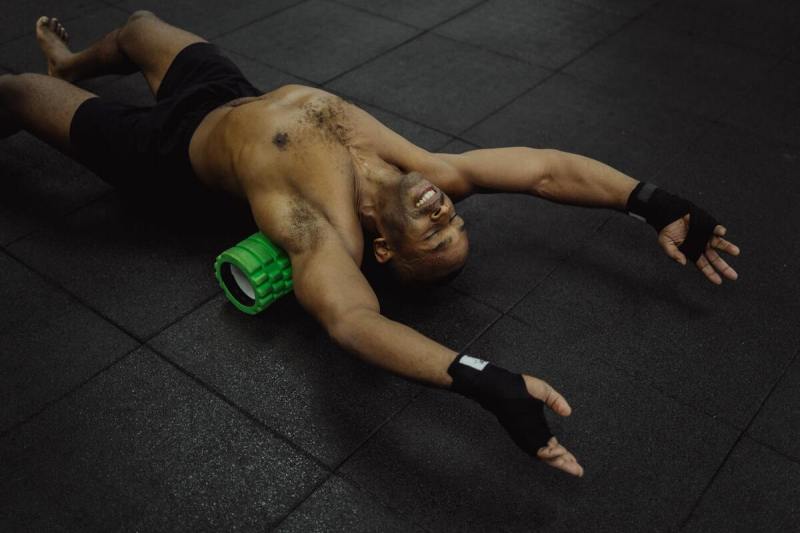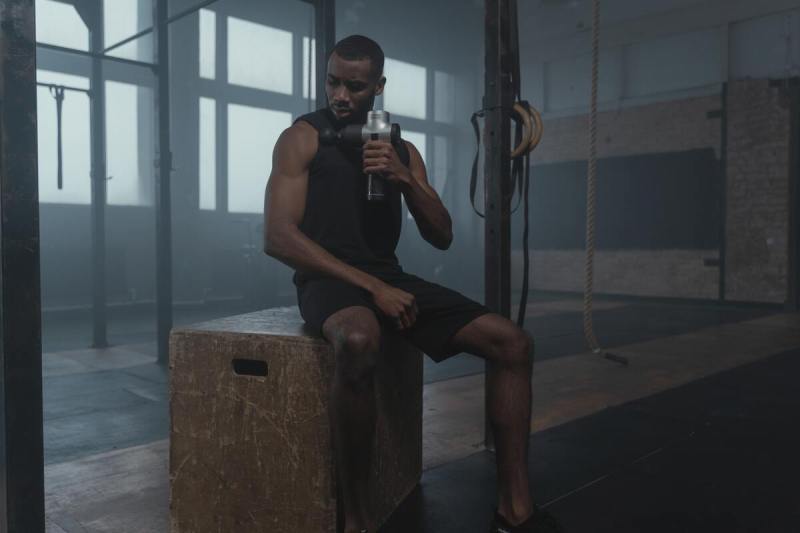Muscle soreness can be a signal of various things, depending on the person. As a trainer, I constantly have clients approach me, saying that they are sore and asking how to minimize the discomfort so they can be ready for their next workout. While exercise and hard labor are the most common causes of sore muscles, certain medical conditions like fibromyalgia and diabetes could be the reason.
When it comes to exercise, sore muscles can be a sign that you should reduce the intensity of your workouts or simply take a rest day and keep up the pace. Whatever the case, it’s safe to say that muscle soreness is normal to some people and a cause for alarm to others.
At this point, it’s okay to wonder whether it is possible to get rid of those sore muscles in a short time. Not to worry. We will explore a few effective tips on how to get rid of sore muscles overnight. It’s time to dive in!
Take a warm Epsom salt bath

Epsom salt, or magnesium sulfate, is a chemical compound made of sulfur and magnesium. According to Dr Naoki Umeda, MD, an integrative medicine specialist, “Despite the lack of available scientific data, tales about the healing power of Epsom Salt have been circulating for centuries.”
So, a warm 12 to 15-minute Epsom salt bath can ease and relieve pain around your muscles since the warm water expands your blood vessels. This, in turn, improves circulation, allowing more oxygen and essential nutrients in your body. It ultimately soothes your muscles and joints.
Pregnant women and people with kidney diseases, heart infections, and severe burns should avoid taking Epsom salt baths as it may lead to complications.
Use a foam roller or massage gun

Foam rollers and massage guns are tools that use myofascial release therapy. This alternative medicine therapy focuses on relieving pain around your myofascial tissues.
While both tools perform the same function of relieving muscle soreness, experts advise their usage in different scenarios. Foam rollers are better when targeting a muscle group or a wider area of your body. These tools rely on your body weight to ease muscle tension. So, they are better used in a wider range of motion for best results.
Meanwhile, a massage gun is better for targeting a specific part of your muscle because of how it is structured. It has a pointed surface that comes in contact with the muscle. Unlike foam rollers, it doesn’t depend on your body weight to be effective since it operates mechanically.
Apply heat therapy

Also known as thermotherapy, heat therapy is a procedure that involves applying heat to specific parts of the body to relieve pain and promote overall health. Experts use a hot cloth, ultrasound, a sauna, and even hot water to achieve the soothing effects of heat therapy.
Heat therapy helps to relieve muscle soreness. It opens up your blood vessels to accommodate more blood and oxygen, especially in the affected area. This improved circulation relaxes the injured muscles and tissues, making you feel relieved.
Try to avoid heat therapy if you have inflammation or an open wound, as it may lead to further complications.
Stretch gently before bed

Sleep experts recommend stretching before bed. It’s valuable for your mental and physical health since it delivers a soothing effect throughout your body, especially your muscles.
Stretching before bed can help you relieve tension around your muscles, allowing your body to feel more comfortable. This happens because of increased blood circulation around your body. In other words, stretching before bed increases the muscle’s demand for oxygen, making your heart pump blood into your system.
Consequently, this circulation helps to transport essential nutrients to your muscles, aiding faster recovery from pain or soreness.
Stay hydrated

As humans, we cannot do without some form of hydration. It is akin to life. Besides, your body and even your muscles are made up of over 70% water. This means that without water in your system, a malfunction could occur.
For example, fluid loss occurs during intense workouts or conditions like diarrhea or hormonal imbalances. Failure to replenish such fluids through hydration can lead to complications such as muscle soreness. This is because fluids eliminate toxins, regulate temperature, and lubricate your joints to prevent inflammation and overall pain.
Use topical muscle relief creams

Topical muscle relief creams are available in pharmaceutical stores. They include painkillers, rubs, and analgesics you apply directly to the sore area of the muscle. Note that these creams usually include counterirritants, lidocaine, or capsaicin.
Counterirritants include ingredients like camphor or menthol that irritate the surface of the skin to heal the underlying discomfort or soreness. Meanwhile, lidocaine is a local anesthetic that relieves soreness by blocking the brain’s pain receptors to numb the painful area.
Capsaicin helps to relieve muscle soreness by providing warmth to the area to block the brain’s pain receptors.
Get plenty of quality sleep

Aside from lowering overall stress levels, getting quality sleep can help to relieve muscle soreness. Sleeping properly allows your body to enter a state of healing and relaxation. This, in turn, promotes the release of growth hormones, which repair damaged tissues and boost recovery from muscle soreness.
Plenty of quality sleep is also necessary, as it keeps you in perfect condition to perform your workouts without feeling unnecessarily tired. Hence, sleep between seven to nine hours each night for the best recovery results.
Frequently asked questions

How do you treat sore muscles ASAP?
You can treat sore muscles as soon as possible using the steps in this article. For example, you can take a warm Epsom salt bath, adopt heat therapy, or even use topical muscle relief creams.
Can sore muscles heal overnight?
You want to know how to get rid of sore muscles overnight, but it depends on what caused the soreness. If it was a light workout, the soreness can heal in a day. Soreness from intense workouts or muscle overstrain can take more time to heal.
What drinks help with muscle soreness?
Hydration is just as important as any other way of curing soreness. Hence, watermelon juice, beetroot juice, tart cherry juice, coffee, and even water are vital. They contain the necessary ingredients to ease muscle pain after strenuous activities.




